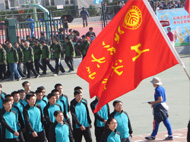主办:6163am银河线路特邀讲座
报告人:美国国家工程院院士、斯坦福大学Gerald Fuller教授
时间:12月11日14:00—15:00
地点:6163am银河线路1号楼210会议室
主持人:6163am银河线路院长张东晓教授
Abstract
The stability of emulsions and foams are affected by a number of physical processes. As thin liquid films surrounding bubbles and drops drain, film rupture can occur, leading to coalescence and to coarsening. A common approach to appreciating stability in these systems is to create a bulk emulsion or foam and to follow the rate of creaming (for an emulsion) or collapse and drainage (for a foam). In this lecture, an alternative approach is described whereby individual bubbles and drops are monitored as they approach a fluid/fluid interface until coalescence ensues. These measurements utilize a newly developed instrument, the Dynamic Fluid Film Interferometer (DFI) where draining film thicknesses can be measured in space and time as well as the pressure drop (Laplace pressure) across the interface. Application of the DFI to study two problems is presented: (1) coalescence of oil/water emulsions in the presence of asphaltenes and (2) antifoaming of lubricating oils.
Coalescence of oil/water emulsions in the presence of asphaltenes.
Asphaltenes are polyaromatic hydrocarbons defined by their solubility. For example, one classification as them soluble in toluene but insoluble in n-heptane. As heavy oils are increasingly being extracted, the asphaltenes are increasingly encountered in production. These complex molecules have surfactant-like qualities and readily attach to water/oil interfaces, making water removal difficult. This is a consequence of interfacial viscoelasticity that ensues upon asphaltene adsorption, which strengthens the skin on the surface of water droplets, which slows down and even arrests coalescence. Using the DFI in combination with methods to measure interfacial viscoelasticity, it is demonstrated that coalescence is strongly delayed when water drops are aged in the presence of asphaltenes. However, a second phenomenon occurs in the presence of asphaltenes, which was unexpected. A spontaneous emulsification occurs in in the presence of these compounds wherein micron-sized droplets of water coated with asphaltenes are produced. They reside in the oil phase in the vicinity of the interface and can act as de-emulsifiers and encourage the coalescence of large millimeter sized drops. Unfortunately, however, these small drops will generally exacerbate the removal of water from heavy oils.
Foaming in lubricant oils.
Foaming must be avoided in lubricating oils but this can be difficult since air entrainment is encouraged as mechanical, moving parts encounter air interfaces. For this reason, oils are usually formulated with the addition of antifoaming additives that accelerate bubble coalescence. In this example of the use of the DFI, the origin of foam stability in lubricate base oils is explored. In general, Marangoni stresses are the source of foam stability since these stresses can replenish draining liquid films existing between bubbles and extend their life time. Ordinarily, these stresses are a result of surfactants. However, in the case of non-aqueous lubricating oils, surfactants are never added and stable foams can be created, even in the case of isothermal systems (thermal gradients can also cause Marangoni stresses). Using the DFI we have established that soluto-capillary effects are the source of foam stability in lubricant oils. This occurs whenever the base oils are not purely a single components and is linked to differential evaporation of different components that might exist is oils. Since components with lower evaporation rates are generally more viscous and have higher surface tensions, Marangoni stresses will naturally appear and stabilize foams. This finding has important consequences on the design of lubricant oils.
Bio. for Gerald Fuller
Gerald Fuller is the Fletcher Jones Professor of Chemical Engineering at Stanford University. He joined Stanford in 1980 following his graduate work at Caltech where he acquired his MS and PhD degrees. His undergraduate education was obtained at the University of Calgary, Canada. Professor Fuller's interests lie in studies of rheology and interfacial fluid mechanics. His work has been recognized by receipt of the Bingham Medal of The Society of Rheology, membership in the National Academy of Engineering, election to the American Academy of Arts and Science, and honorary doctorates from the Universities of Crete, Greece, and Leuven, Belgium. He presently serves as the General Secretary to the International Committee on Rheology.









